Publicações de Paula Homem-de-Mello
Carneiro, Leonardo Martins; Araújo, Karen Rafaela Gonçalves; Melo, Diego Ulysses; Bartoloni, Fernando Heering; Soares, Alexandre Learth; Yonamine, Mauricio; Homem-de-Mello, Paula Computational-Assisted Development of Molecularly Imprinted Polymers for Synthetic Cannabinoid Recognition Journal Article Em: ACS Omega, 2025, ISSN: 2470-1343. Resumo | Links | BibTeX | Tags: Melo, Diego Ulysses; Carneiro, Leonardo Martins; Coutinho-Neto, Mauricio Domingues; Homem-de-Mello, Paula; Bartoloni, Fernando Heering Developing a Machine Learning Model for Hydrogen Bond Acceptance Based on Natural Bond Orbital Descriptors Journal Article Em: J. Org. Chem., 2025, ISSN: 1520-6904. Resumo | Links | BibTeX | Tags: Neto, Antonio M.; Valeriano, Maycom C.; Temperini, Marcia L. A.; Homem-de-Mello, Paula; Mamián-López, Mónica B. Improving 5-halouracils SERS detection driven by Watson & Crick pairing recognition. A spectroscopic & DFT study Journal Article Em: Spectrochimica Acta Part A: Molecular and Biomolecular Spectroscopy, vol. 337, 2025, ISSN: 1386-1425. Resumo | Links | BibTeX | Tags: Vassiliades, Sandra V.; Argüello, Karina A. B.; Castro, Carlos E.; Silva, Clovis A.; Gonzalez, Ana Clara; Homem-de-Mello, Paula; Nantes, Iseli Lourenço; Aguilar, Andrea M.; Barbosa-Reis, Gustavo; Oliveira-Silva, Diogo; Giuntini, Francesca; Alves, Wendel A. Synthesis, photophysical properties, and photocytotoxic effects of porphyrin-diphenylalanine conjugates on HeLa cells Journal Article Em: Journal of Molecular Structure, vol. 1322, 2024, ISSN: 0022-2860. Resumo | Links | BibTeX | Tags: Homem-de-Mello, Paula; de Souza, Ana Clara Gonzalez; Melo, Diêgo U.; Mol, Gabriel S.; Souza, Jhonathan R. De; Carneiro, Leonardo M.; Nobrega, Maíra G.; Zanotto, Mateus; Corrêa, Raissa Lohanna G. Q.; de Oliveira, Hueder P. M.; Bartoloni, Fernando H.; Aoto, Yuri A.; Coutinho-Neto, Maurício Domingues; Orestes, Ednilsom DESIGN BIOINSPIRADO DE CORANTES Journal Article Em: Quim. Nova, 2024, ISSN: 1678-7064. Resumo | Links | BibTeX | Tags: Maringolo, Vivian; Carvalho, Alexandre Z.; Homem-de-Mello, Paula; Zanotto, Mateus; Martins, Fernanda C. O. L.; Melchert, Wanessa R.; Rocha, Diogo L. Spectrophotometric determination of bisphenol A in beverages using multi-dispersion calibration. Journal Article Em: Food Control, 2024, ISSN: 0956-7135. Resumo | Links | BibTeX | Tags: Santos, Demetrio J.; Tavares, Lara B.; Antonino, Leonardo D.; Junior, Rogerio R. Sousa; Homem-de-Mello, Paula; Leão, Cedric R. Kraft lignin-based polyurethanes: Bulk properties, stability and adhesion to native aluminum surfaces Journal Article Em: Polymer, vol. 309, pp. 127457, 2024, ISSN: 0032-3861. Resumo | Links | BibTeX | Tags: Hydroxypropylated lignin, Kraft lignin, Lignin-based polyurethane (LPU) Melo, Diego Ulysses; de Lima, Henrique Bergonzini; Reis, Roberta Albino; Boaro, Andreia; Pinto, Alexander Garreta Gonçalves Costa; Ciscato, Luiz Francisco Monteiro Leite; Homem-de-Mello, Paula; Bartoloni, Fernando Heering Em: The Journal of Organic Chemistry, vol. 89, não 1, pp. 345-355, 2023, (PMID: 38113466). Resumo | Links | BibTeX | Tags: de Almeida, James M.; Ferreira, Conny Cerai; Bandeira, Lucas; Cunha, Renato D.; Coutinho-Neto, Maurício Domingues; Homem-de-Mello, Paula; Orestes, Ednilsom; Nascimento, Regina Sandra Veiga Em: The Journal of Physical Chemistry B, vol. 0, não 0, pp. null, 2023, (PMID: 37871185). Resumo | Links | BibTeX | Tags: Corrêa, Raissa Lohanna Gomes Quintino; de Moraes, Matheus Morato Ferreira; de Oliveira, Kléber Thiago; Aoto, Yuri Alexandre; Coutinho-Neto, Maurício Domingues; Homem-de-Mello, Paula Diving into the optoelectronic properties of Cu(II) and Zn(II) curcumin complexes: a DFT and wavefunction benchmark Journal Article Em: J Mol Model, vol. 29, não 5, 2023, ISSN: 0948-5023. Links | BibTeX | Tags: Catalysis, Computational Theory and Mathematics, Computer Science Applications, Inorganic Chemistry, Organic Chemistry, Physical and Theoretical Chemistry Souza, Jhonathan R.; Curutchet, Carles; Aoto, Yuri A.; Homem-De-Mello, Paula Benchmarking DFT functionals for photophysics of pyranoflavylium cations Journal Article Em: Journal of Molecular Graphics and Modelling, vol. 122, pp. 108460, 2023, ISSN: 1093-3263. Resumo | Links | BibTeX | Tags: Benchmark, Electronic structure, Excited-states, Photophysics, Photosensitizers, Time-dependent density functional theory (TD-DFT)2025
@article{Carneiro2025b,
title = {Computational-Assisted Development of Molecularly Imprinted Polymers for Synthetic Cannabinoid Recognition},
author = {Leonardo Martins Carneiro and Karen Rafaela Gonçalves Araújo and Diego Ulysses Melo and Fernando Heering Bartoloni and Alexandre Learth Soares and Mauricio Yonamine and Paula Homem-de-Mello},
doi = {10.1021/acsomega.5c03148},
issn = {2470-1343},
year = {2025},
date = {2025-07-24},
urldate = {2025-07-24},
journal = {ACS Omega},
publisher = {American Chemical Society (ACS)},
abstract = {Synthetic cannabinoids (SCs), a prominent class of new psychoactive substances, pose growing challenges to public health due to their severe toxic effects and widespread global presence. In this study, we employed computational methods to develop molecularly imprinted polymers (MIPs) for the selective recognition of seven SCs, chosen based on seizure reports from the Narcotics Examination Unit of the Scientific Police of the State of São Paulo. Density functional theory and extended tight binding for geometry, frequency, and noncovalent model 2 (GFN2-xTB) calculations were used to optimize the molecular geometries and predict ideal monomer–solvent combinations for MIP synthesis. We assessed six solvents─acetone, acetonitrile, dichloromethane, chloroform, diethyl ether, and dimethyl sulfoxide─based on their solvation energy, identifying suitable candidates for the polymerization step. Hydrogen bonding interaction sites were mapped, guiding the selection of functional monomers such as acrylic acid (AA), 4-vinylbenzoic acid (BA), 2-(trifluoromethyl)acrylic acid (TFAA), and methacrylic acid. Our findings suggest that TFAA and BA offer the most stable complexation with SCs, influenced by their acidity and aromatic interactions. These computational predictions pave the way for resource-efficient experimental validation and enhance the development of MIPs as tools for the extraction of SCs in complex matrices, contributing to efforts to combat the global SC epidemic.},
keywords = {},
pubstate = {published},
tppubtype = {article}
}
@article{Melo2025,
title = {Developing a Machine Learning Model for Hydrogen Bond Acceptance Based on Natural Bond Orbital Descriptors},
author = {Diego Ulysses Melo and Leonardo Martins Carneiro and Mauricio Domingues Coutinho-Neto and Paula Homem-de-Mello and Fernando Heering Bartoloni},
doi = {10.1021/acs.joc.5c00724},
issn = {1520-6904},
year = {2025},
date = {2025-07-06},
urldate = {2025-07-06},
journal = {J. Org. Chem.},
publisher = {American Chemical Society (ACS)},
abstract = {This study employs machine learning (ML) to assess the predictive power of electronic descriptors derived from natural bond orbital (NBO) analysis for hydrogen bond acceptance. Using a data set of 979 hydrogen bond complexes, each formed by a hydrogen bond acceptor and 4-fluorophenol as the donor, we optimized geometries via GFN2-xTB, followed by DFT single-point calculations. From these, NBO analysis was used to extract intramolecular donor–acceptor interactions, particularly the orbital stabilization energies (E(2)), which reflect electron delocalization and relate to canonical resonance structures. The E(2) values served as features to train seven ML models, based on different techniques: KNN, Decision Tree, SVM, RF, MLP, XGBoost, and CatBoost. To our knowledge, this is the first work that uses E(2) as a standalone ML descriptor for hydrogen bond acceptance. Even with a small set of descriptors, we achieved high predictive performance, with errors below 0.4 kcal mol–1, surpassing previous studies that used heterogeneous descriptors, including quantum-chemical data. Our results highlight the utility of NBO-based features in building accurate, physically meaningful, and generalizable ML models for pKBHX prediction.},
keywords = {},
pubstate = {published},
tppubtype = {article}
}
@article{Neto2025,
title = {Improving 5-halouracils SERS detection driven by Watson & Crick pairing recognition. A spectroscopic & DFT study},
author = {Antonio M. Neto and Maycom C. Valeriano and Marcia L.A. Temperini and Paula Homem-de-Mello and Mónica B. Mamián-López},
doi = {10.1016/j.saa.2025.126091},
issn = {1386-1425},
year = {2025},
date = {2025-03-22},
urldate = {2025-09-00},
journal = {Spectrochimica Acta Part A: Molecular and Biomolecular Spectroscopy},
volume = {337},
publisher = {Elsevier BV},
abstract = {The halogenated C5-substituted uracil derivatives (5-fluor-, 5-chloro, and 5-bromouracil) have drawn attention recently due to their pharmacological uses, properties, and importance as biomarkers and water pollutants. From an analytical point of view, these species are expected to be at very low levels in biological and environmental samples, and the development of methodologies for their determination is a central goal in research. The Raman technique and one of its special effects, Surface-Enhanced Raman Scattering (SERS), is a very suitable approach for detecting and quantifying these compounds. In practice, enhancing Raman scattering requires a nanostructured noble metal surface with the species of interest attached to it. Still, to maximize the effect, a deeper comprehension of the nature of the analyte-metal surface interaction is desirable. The structural information SERS spectra provide can be complemented by theoretical approaches, such as the Density Functional Theory (DFT) calculations. This work studied three 5-halouracils attached to silver nanoparticles (AgNPs) from experimental and theoretical perspectives. The observed patterns in the spectroscopic behavior showed a trend related to the electronegativity at the halogenated moieties, suggesting their direct influence in enhancing Cdouble bondC and Cdouble bondO stretching modes. Then, the formation of base pairs with adenine through hydrogen bonding was studied as a strategy to improve the detectability through SERS, supported by the well-known high affinity of adenine towards metal nanoparticles. We show that adenine favors the orientation of the 5-halouracils, reaching an additional signal enhancement that is very useful for analytical purposes, as demonstrated for 5-FU, reaching a limit of detection (LOD) of 2.36 nmol L−1. Wavenumber shifts and intensification of Nsingle bondH modes observed in the SERS spectra, along with DFT calculations, strongly suggest that forming hydrogen bonding (Nsingle bondH----N) upon the interaction of the base pairs with an Ag20 cluster is key for improving the halouracils LOD through SERS.},
keywords = {},
pubstate = {published},
tppubtype = {article}
}
2024
@article{Vassiliades2025,
title = {Synthesis, photophysical properties, and photocytotoxic effects of porphyrin-diphenylalanine conjugates on HeLa cells},
author = {Sandra V. Vassiliades and Karina A.B. Argüello and Carlos E. Castro and Clovis A. Silva and Ana Clara Gonzalez and Paula Homem-de-Mello and Iseli Lourenço Nantes and Andrea M. Aguilar and Gustavo Barbosa-Reis and Diogo Oliveira-Silva and Francesca Giuntini and Wendel A. Alves},
doi = {10.1016/j.molstruc.2024.140545},
issn = {0022-2860},
year = {2024},
date = {2024-10-30},
urldate = {2025-02-00},
journal = {Journal of Molecular Structure},
volume = {1322},
publisher = {Elsevier BV},
abstract = {Photodynamic therapy (PDT) triggers selective cell death through intensive oxidative stress induced by the generation of reactive species by a photosensitizer (PS) excited by light. In this work, we report the synthesis of four novel porphyrins conjugated to the self-assembling dipeptide L,L-diphenylalanine (FF), effectively inhibiting cervical tumor cell growth. The PS were prepared using the classical A3B strategy, with functionalized and non-functionalized porphyrins obtained in moderate yields over 3 to 4 steps. Absorption and fluorescence studies indicate that the FF attached to the porphyrin ring influences their aggregation at micromolar concentrations. The compounds were efficiently internalized by HeLa cells after 4 h of incubation. Cytotoxicity tests performed in the 1.25–5.0 µmol L−1 range showed that cell viability was reduced to 70 % after irradiation (650 nm). A correlation between cell permeation and the cell death mechanism promoted by the porphyrin was observed.},
keywords = {},
pubstate = {published},
tppubtype = {article}
}
@article{Homem-de-Mello2025,
title = {DESIGN BIOINSPIRADO DE CORANTES},
author = {Paula Homem-de-Mello and Ana Clara Gonzalez de Souza and Diêgo U. Melo and Gabriel S. Mol and Jhonathan R. De Souza and Leonardo M. Carneiro and Maíra G. Nobrega and Mateus Zanotto and Raissa Lohanna G. Q. Corrêa and Hueder P. M. de Oliveira and Fernando H. Bartoloni and Yuri A. Aoto and Maurício Domingues Coutinho-Neto and Ednilsom Orestes},
url = {https://www.scielo.br/j/qn/a/RCr5ZtRt4bVGwZhp5nxGSjP/},
doi = {10.21577/0100-4042.20250047},
issn = {1678-7064},
year = {2024},
date = {2024-09-09},
urldate = {2025-00-00},
journal = {Quim. Nova},
publisher = {Sociedade Brasileira de Quimica (SBQ)},
abstract = {The history of the discovery, use, and development of dyes is closely linked to the history of humanity itself. Among the first records of human civilization are cave paintings made from, e.g., fruits, plants, minerals, and insects. Over the centuries, using different techniques, colors have been given to all types of materials and products, from clothing to food. The chemicals responsible for colors are dyes - a vast collection of molecules of the most varied compositions, but which have in common the absorption of light within the visible window of the electromagnetic spectrum. This article aims not only to review the properties of some classes of natural dyes, their origins, and their applications but also to describe the various computational chemistry methods involved in designing new bio-inspired molecules.},
keywords = {},
pubstate = {published},
tppubtype = {article}
}
@article{Maringolo2024,
title = {Spectrophotometric determination of bisphenol A in beverages using multi-dispersion calibration.},
author = {Vivian Maringolo and Alexandre Z. Carvalho and Paula Homem-de-Mello and Mateus Zanotto and Fernanda C.O.L. Martins and Wanessa R. Melchert and Diogo L. Rocha},
url = {https://www.sciencedirect.com/science/article/pii/S0956713524005681},
doi = {10.1016/j.foodcont.2024.110851},
issn = {0956-7135},
year = {2024},
date = {2024-09-00},
urldate = {2024-09-00},
journal = {Food Control},
publisher = {Elsevier BV},
abstract = {Bisphenol A (BPA) is an endocrine disruptor that may be present in plastics and coatings of food and beverage packages. In this regard, the World Health Organization recommends the maximum migration of BPA to foodstuffs as < 0.6 mg kg-1. Analytical BPA determination procedures have been based on chromatographic techniques, which generate waste with organic solvents. Alternatively, proposed spectrophotometric procedures have often shown high detection limits for foodstuffs analysis, requiring pre-concentration prior to determination. The analysis of beverages is susceptible to interferences because of their complex formulation comprising dyes and sugars, for example, that hinder spectrophotometric determinations. Multi-signal calibrations are powerful tools used to minimize matrix effects, and recently, they have proven efficient when performed in flow analysis systems, denominated as multi-dispersion calibration (MDC). This work proposes a multi-pumping flow system for the spectrophotometric determination of BPA based on the reaction with sulfanilamide (used for the first time) after diazotization to yield a compound with an absorption maximum at 446 nm. After the optimization of the main parameters, a linear response was observed between 0.25 and 10 mg L-1. The detection limit (by external calibration), coefficient of variation (n=20), and determination rate were estimated at 0.057 mg L-1, 4.0 %, and 33 h-1, respectively. The MDC was exploited to analyze beverage samples to minimize interferences, especially due to dyes and sucrose. The detection limit estimated for this method was 0.06 mg L-1. Recoveries from 84 to 114 % and the agreement of comparative analysis of the samples with the reference procedure (at the 95% confidence level) demonstrated the accuracy of the proposed procedure. Therefore, the developed alternative is reliable with proper sensitivity and minimum sample preparation for the spectrophotometric determination of BPA in beverages.},
keywords = {},
pubstate = {published},
tppubtype = {article}
}
@article{DOSSANTOS2024127457,
title = {Kraft lignin-based polyurethanes: Bulk properties, stability and adhesion to native aluminum surfaces},
author = {Demetrio J. Santos and Lara B. Tavares and Leonardo D. Antonino and Rogerio R. Sousa Junior and Paula Homem-de-Mello and Cedric R. Leão},
url = {https://www.sciencedirect.com/science/article/pii/S0032386124007936},
doi = {https://doi.org/10.1016/j.polymer.2024.127457},
issn = {0032-3861},
year = {2024},
date = {2024-01-01},
urldate = {2024-01-01},
journal = {Polymer},
volume = {309},
pages = {127457},
abstract = {Lignin as a byproduct from pulp and paper manufacturing has been extensively investigated as raw material for polymer developments. Although, fundamental topics related to the adhesion mechanisms of lignin-based reactive polyurethanes (LPU) still remain unclear. In this work, LPU thin films on native aluminum surface were prepared and characterized. Diluted in THF, employed as the solvent, reactive mixtures of 4,4′-methylene diphenyl isocyanate (4,4′-MDI) and the soluble fraction of three lignins (liquid hydroxypropylated Kraft lignin and two powder Kraft lignins with different pH) were used for LPU thin film deposition via spin coating on aluminum (PVD layer on silicon wafer). The resulting film thickness ranged from 8 nm to several micrometers. The chemical state of the three LPU compositions was assessed in bulk by infrared attenuated total reflectance (IR-ATR) and in the thin films by infrared external reflection absorption spectroscopy (IR-ERAS). Binding energies of 4,4′-methylene diphenyl diisocyanate with aliphatic and aromatic hydroxyl groups were estimated using Density Functional Theory (DFT) simulations. Thus, besides the elucidation of the bulk chemical state of LPUs, the relation to adhesion and stability of LPUs to a native aluminum surface was evaluated. In addition, film topography and homogeneity were monitored by SFM. All lignin types form uniform and homogeneous films. Results revealed a higher consumption of isocyanate groups (NCO) in the formulation with the alkaline Kraft lignin than with the acid one, despite its lower hydroxyl content. A gradient of unreacted NCO was observed in LPU thin films obtained with the powder Kraft lignin types. Residual NCO is also found in thicker films, while the thinnest films did not contain unreacted NCO anymore, indicating the activating effect of the native aluminum surface on LPU formation.},
keywords = {Hydroxypropylated lignin, Kraft lignin, Lignin-based polyurethane (LPU)},
pubstate = {published},
tppubtype = {article}
}
2023
@article{doi:10.1021/acs.joc.3c02079,
title = {Chemiluminescence of a Firefly Luciferin Analogue Reveals that Formation of the Key Intermediate Responsible for Excited State Generation Occurs on a Fully Concerted Step},
author = {Diego Ulysses Melo and Henrique Bergonzini de Lima and Roberta Albino Reis and Andreia Boaro and Alexander Garreta Gonçalves Costa Pinto and Luiz Francisco Monteiro Leite Ciscato and Paula Homem-de-Mello and Fernando Heering Bartoloni},
url = {https://doi.org/10.1021/acs.joc.3c02079},
doi = {10.1021/acs.joc.3c02079},
year = {2023},
date = {2023-12-19},
urldate = {2024-01-01},
journal = {The Journal of Organic Chemistry},
volume = {89},
number = {1},
pages = {345-355},
abstract = {The chemiluminescence (CL) reaction of eight different 2-(4-hydroxyphenyl)-4,5-dihydrothiazole-4-carboxylate esters with an organic superbase and oxygen was investigated through a kinetic and computational study. These esters are all analogues to the luciferin substrate involved in efficient firefly bioluminescence. The kinetic data obtained from CL emission and light absorption assays were used in the context of linear free energy relationships (LFER); we obtained the Hammett reaction constant ρ = +1.62 ± 0.09 and the Brønsted constant βlg = −0.39 ± 0.04. These observations from LFER, together with activation parameters obtained from Arrhenius plots, suggest that the formation of the high-energy intermediate (HEI) 1,2-dioxetanone occurs via a concerted mechanism during the rate-determining step of the reaction. Calculations performed using density functional theory support a late transition state for HEI formation within the reaction mechanism pathway, which was described considering geometric parameters, Wiberg bond indices from natural bond order analysis, and the atomic charges derived from the electrostatic potential.},
note = {PMID: 38113466},
keywords = {},
pubstate = {published},
tppubtype = {article}
}
@article{doi:10.1021/acs.jpcb.3c01707,
title = {Synergistic Interaction of Hyperbranched Polyglycerols and Cetyltrimethylammonium Bromide for Oil/Water Interfacial Tension Reduction: A Molecular Dynamics Study},
author = {James M. de Almeida and Conny Cerai Ferreira and Lucas Bandeira and Renato D. Cunha and Maurício Domingues Coutinho-Neto and Paula Homem-de-Mello and Ednilsom Orestes and Regina Sandra Veiga Nascimento},
url = {https://doi.org/10.1021/acs.jpcb.3c01707},
doi = {10.1021/acs.jpcb.3c01707},
year = {2023},
date = {2023-10-23},
journal = {The Journal of Physical Chemistry B},
volume = {0},
number = {0},
pages = {null},
abstract = {Applying surfactants to reduce the interfacial tension (IFT) on water/oil interfaces is a proven technique. The search for new surfactants and delivery strategies is an ongoing research area with applications in many fields such as drug delivery through nanoemulsions and enhanced oil recovery. Experimentally, the combination of hyperbranched polyglycerol (HPG) with cetyltrimethylammonium bromide (CTAB) substantially reduced the observed IFT of oil/water interface, 0.9 mN/m, while HPG alone was 5.80 mN/m and CTAB alone IFT was 8.08 mN/m. Previous simulations in an aqueous solution showed that HPG is a surfactant carrier. Complementarily, in this work, we performed classical molecular dynamics simulations on combinations of CTAB and HPG with one aliphatic chain to investigate further the interaction of this pair in oil interfaces and propose the mechanism of IFT decrease. Basically, from our results, one can observe that the IFT reduction comes from a combination of effects that have not been observed for other dual systems: (i) Due to the CTAB-HPG strong interaction, a weakening of their specific and isolated interactions with the water and oil phases occurs. (ii) Aggregates enlarge the interfacial area, turning it into a less ordered interface. (iii) The spread of individual molecules charge profiles leads to the much lower interfacial tension observed with the CTAB+HPG systems.},
note = {PMID: 37871185},
keywords = {},
pubstate = {published},
tppubtype = {article}
}
@article{Corrêa2023,
title = {Diving into the optoelectronic properties of Cu(II) and Zn(II) curcumin complexes: a DFT and wavefunction benchmark},
author = {Raissa Lohanna Gomes Quintino Corrêa and Matheus Morato Ferreira de Moraes and Kléber Thiago de Oliveira and Yuri Alexandre Aoto and Maurício Domingues Coutinho-Neto and Paula Homem-de-Mello},
doi = {10.1007/s00894-023-05560-1},
issn = {0948-5023},
year = {2023},
date = {2023-05-00},
journal = {J Mol Model},
volume = {29},
number = {5},
publisher = {Springer Science and Business Media LLC},
keywords = {Catalysis, Computational Theory and Mathematics, Computer Science Applications, Inorganic Chemistry, Organic Chemistry, Physical and Theoretical Chemistry},
pubstate = {published},
tppubtype = {article}
}
@article{SOUZA2023108460,
title = {Benchmarking DFT functionals for photophysics of pyranoflavylium cations},
author = {Jhonathan R. Souza and Carles Curutchet and Yuri A. Aoto and Paula Homem-De-Mello},
url = {https://www.sciencedirect.com/science/article/pii/S109332632300058X},
doi = {https://doi.org/10.1016/j.jmgm.2023.108460},
issn = {1093-3263},
year = {2023},
date = {2023-01-01},
journal = {Journal of Molecular Graphics and Modelling},
volume = {122},
pages = {108460},
abstract = {An intense absorption, phosphorescence, a long triplet excited state lifetime and singlet oxygen generation capabilities are characteristics of pyranoflavylium cations, analogues to pyranoanthocyanidins originated in the maturation process of red wine. Such properties make these compounds potential photosensitizers to be applied in photodynamic therapy. In this context, the photophysical processes underlying that treatment critically depend on the electronic structure of the pyranoflavylium molecules. When employing density functional theory to describe the electronic structure of molecules, the choice of the most suitable functional is not trivial, and benchmark studies are needed to orient practitioners in the field. In this work, a benchmark of seven of the most commonly used density functionals in addressing the photophysical properties of a set of eight pyranoflavylium cations is reported. Ground and excited state geometries, molecular orbitals, and absorption, fluorescence and phosphorescence transition energies were calculated using density functional theory approaches, and evaluated and compared to experimental data and monoreferential wave function-based methodologies. Statistical analysis of the results indicates that global-hybrid functionals allow an excellent description of absorption and emission energies, with errors around 0.05 eV, while range-separated variants led to somewhat larger errors in the range 0.1–0.2 eV. In contrast, range-separated functionals display excellent phosphorescence energies with errors close to 0.05 eV, in this case global-hybrids showing increased discrepancies around 0.5–0.1 eV.},
keywords = {Benchmark, Electronic structure, Excited-states, Photophysics, Photosensitizers, Time-dependent density functional theory (TD-DFT)},
pubstate = {published},
tppubtype = {article}
}
Orientados e Supervisionados por Paula Homem-de-Mello
Vínculo: Doutorado
Instituição: Universidade Federal do ABC (UFABC)
Laboratório: ABCSim – Grupo de Simulação e Modelagem de Átomos, Moléculas e Matéria Condensada
Projeto: Em breve.
 Mateus Martins Zanotto de Toledo
Mateus Martins Zanotto de Toledo
Vínculo: Doutorado
Instituição: Universidade Federal do ABC (UFABC)
Laboratório: ABCSim – Grupo de Simulação e Modelagem de Átomos, Moléculas e Matéria Condensada
Projeto: Design de fotosensibilizadores: Efeitos do ambiente no estado excitado e no tempo de vida do estado tripleto. (FAPESP)
Vínculo: Doutorado
Instituição: Universidade Federal do ABC (UFABC)
Laboratório: ABCSim – Grupo de Simulação e Modelagem de Átomos, Moléculas e Matéria Condensada
Projeto: Em breve.
Vínculo: Mestrado
Instituição: Universidade Federal do ABC (UFABC)
Laboratório: ABCSim – Grupo de Simulação e Modelagem de Átomos, Moléculas e Matéria Condensada
Projeto: Estudo teórico com ênfase em terapia fotodinâmica para o tratamento de câncer de mama. (CAPES)
Vínculo: Mestrado
Instituição: Universidade Federal do ABC (UFABC)
Laboratório: ABCSim – Grupo de Simulação e Modelagem de Átomos, Moléculas e Matéria Condensada
Projeto: Em breve.
 Renan da Silva Marques
Renan da Silva Marques
Vínculo: Bolsista DTI Finep
Instituição: Universidade Federal do ABC (UFABC)
Laboratório: ABCSim – Grupo de Simulação e Modelagem de Átomos, Moléculas e Matéria Condensada
Projeto: Em breve.
Vínculo: Bolsista DTI Finep
Instituição: Universidade Federal do ABC (UFABC)
Laboratório: ABCSim – Grupo de Simulação e Modelagem de Átomos, Moléculas e Matéria Condensada
Projeto: Em breve.








